Sightseeing
places you should visit when in Municipality of Volvi
Ancient Stagira, Aristotle’s birthplace
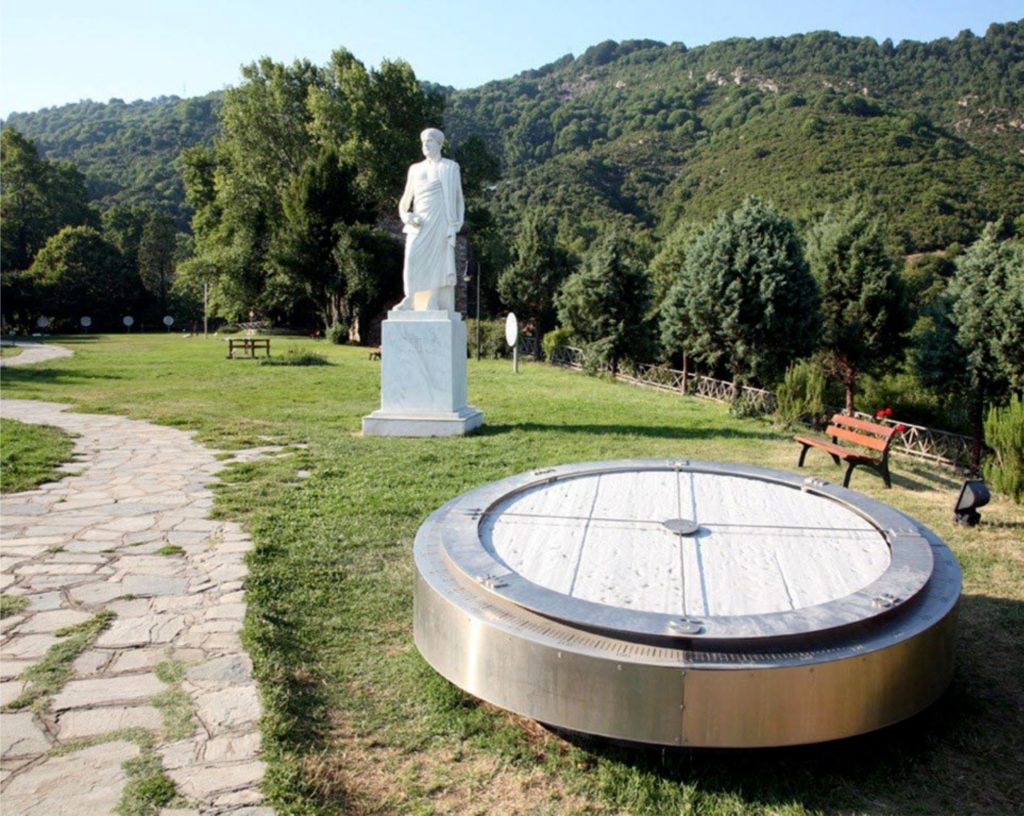 Stagira was an ancient Greek city, located in central Macedonia, near the eastern coast of the peninsula of Chalkidiki, and is chiefly known for being the birthplace of Aristotle, who was a Greek philosopher and polymath, a student of Plato and teacher of Alexander the Great.
Stagira was an ancient Greek city, located in central Macedonia, near the eastern coast of the peninsula of Chalkidiki, and is chiefly known for being the birthplace of Aristotle, who was a Greek philosopher and polymath, a student of Plato and teacher of Alexander the Great.
Aristotle was born in 384 BC , and was to become one of the most important Greek philosophers of antiquity. After Socrates and Plato, Aristotle was the great philosopher who influenced the thinking of the ancients.
A unique park of Aristotle is located at an altitude of about 500 meters, in the historical village of Stagira. It is worth visiting not only for its interesting instruments but also for the great view to the gulf of Ierissos. The park preexisted and the wonderful location was chosen in 1956 to host the statue of Aristotle, made by sculptor Nicholas, in honor of the great philosopher who was born there. The unique interactive instruments were placed there in 2003. They are experimental instruments, operating by rules of physics that are mentioned in Aristotle’s textbooks and especially in the one called “The Naturals and combines recreation, entertainment and education.
The city lies approximately 16 km from Stavros and it’s about a 17 min drive.
The Amphipoli’s Tomb – Kasta Tomb
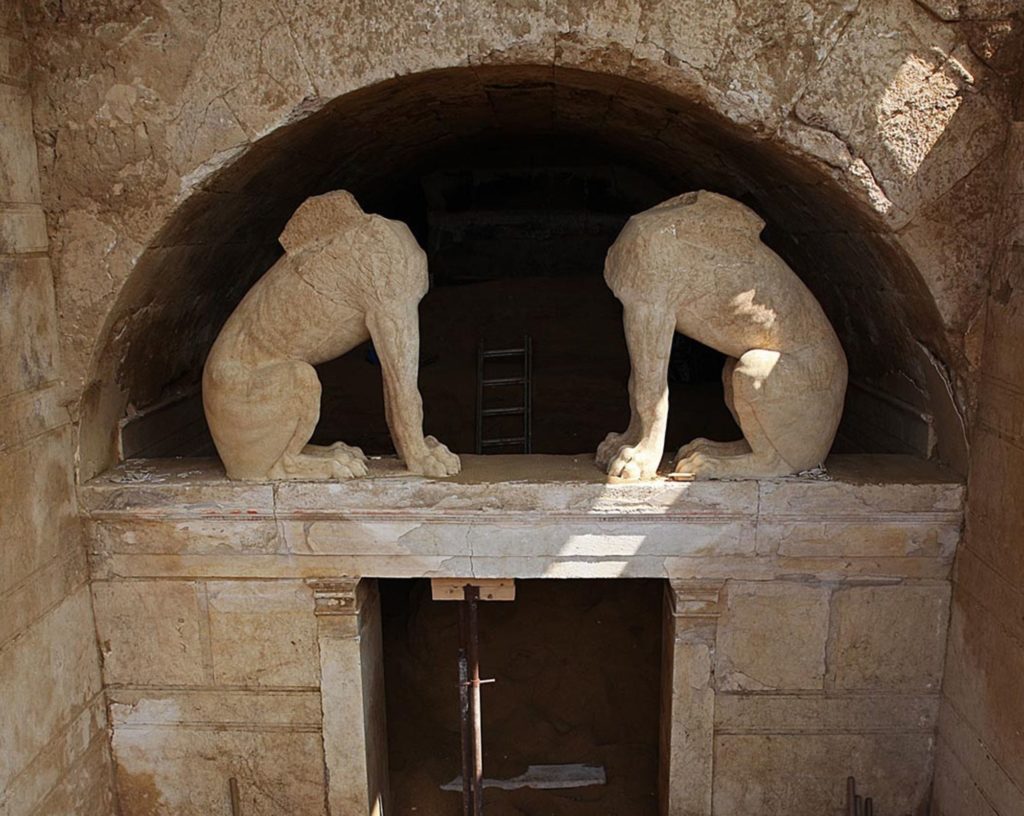

Archaeologists have made a number of important discoveries on the site since August 2014.
Two marble sphinxes approximately 2 m (7 ft) tall that guard the main entrance to the tomb. A fresco, paint still visible, that mimics an Ionian peristyle, on top of which the sphinxes sit. Two female statues of the Caryatid type in the antechamber, which support the entrance to the second compartment of the tomb. A marble door, typical of Macedonian tomb doors. A mosaic—3 m (9.8 ft) wide and 4.5 m (15 ft) long—in the second chamber, which depicts Persephone abducted by the god Pluto,ruler of the underworld. An eight square metre vault and a marble door in the third chamber, where the skeletal remains of 5 individuals were found.
Amphipoli’s tomb lies approximately 30 km from Stavros and it’s about a 25 min drive.
Rentina’s Castle
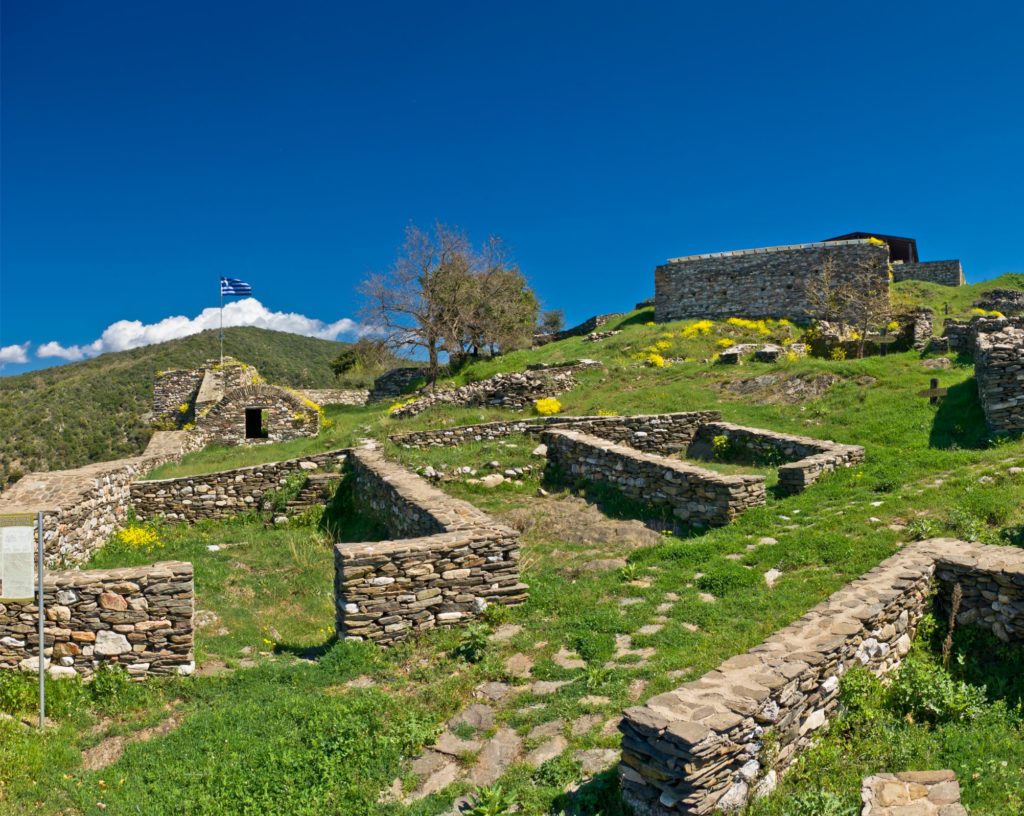

This road became well known during the Roman Era, as the Egnatia Street and continues its life during the Byzantine years, but also during the Turkish occupation until today. The two sides of the hill are steep and difficult to get by and together with the walls they make a very powerful fortified area whose target was to rule and control this road.
The hill is located on the western side of the Richios River and consists of a truly beautiful place. The area is especially protected for its natural beauty but also for its unique vegetation by the international conventions and is considered one of the greatest, of environmental importance, areas of the world.
A total of nine towers have been found, around the wall, in the acropolis and in the transverse wall of the castle. All towers have square shape except for one of Justinian’s time, which is circular. Among the towers, they stand out for their size and also for their height to which the eastern corner tower and the western corner tower still remain today.
Rentina’s castle lies approximately 10 km from Stavros and it’s about a 10 min drive.
Archaeological museum of Thessaloniki
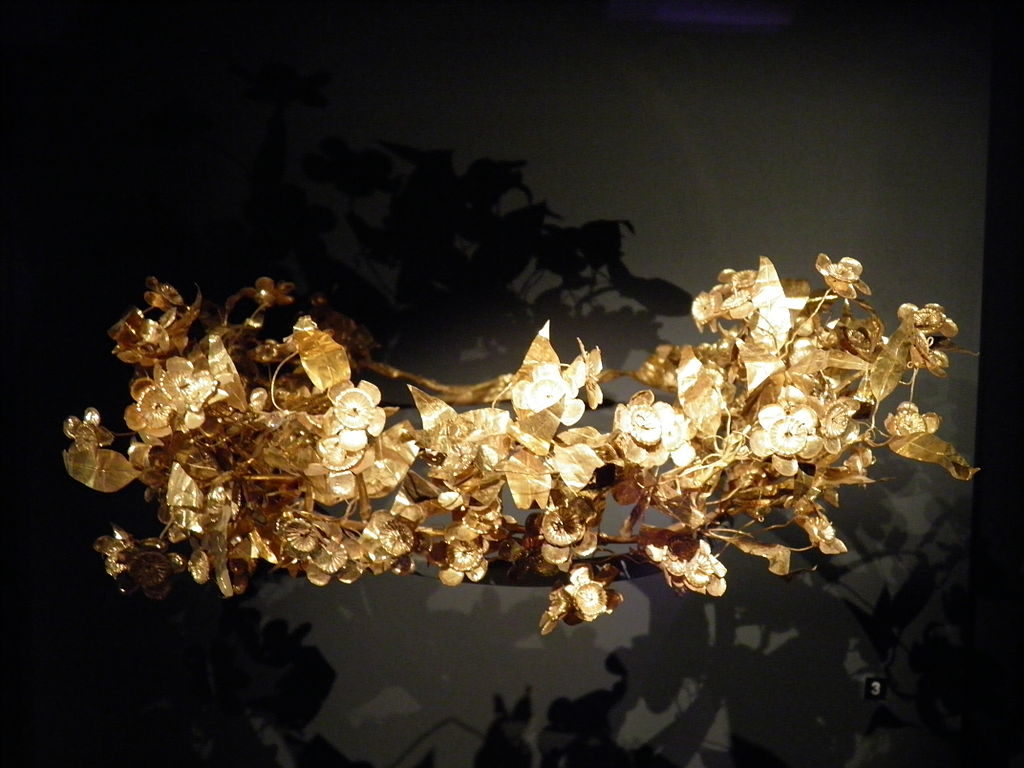

It holds artifacrs from the Archaic, Classical, Hellenistic and Roman periods, mostly from the city of Thessaloniki but also from the region of Macedonia in general. The central rooms hold exhibits from the archaeological excavations conducted in Thessaloniki and the broader area of Macedonia. The new wing hosts two exhibitions: The Gold of Macedon, with artefacts from the cemeteries of Sindos, Agia Paraskevi, Nea Filadelfia, Makrygialos, Derveni, Lete, Serres, and Evropos; and The Thessaloniki Area in Prehistory, with material from prehistoric settlements, dating from the Neolithic to the Early and Late Bronze Age.
Apart from its permanent displays, the Archaeological Museum also hosts major temporary and thematic exhibitions. In the Manolis Andronikos Room, for instance, there is an exhibition titled The Coins of Macedonia from the 6th Century to 148 BC, with examples of coins that were circulating in Macedonia in that period. A showcase in the lobby of the museum displays some finds from the excavation of the Neolithic settlement at Makrygialos in Pieria, accompanied by information about the progress of the excavation. In the new wing, the Gold of Macedon exhibition includes finds from numerous excavations in Central Macedonia.
The museum lies approximately 80 km from Stavros and it’s about a 60 min drive.
Mount Athos
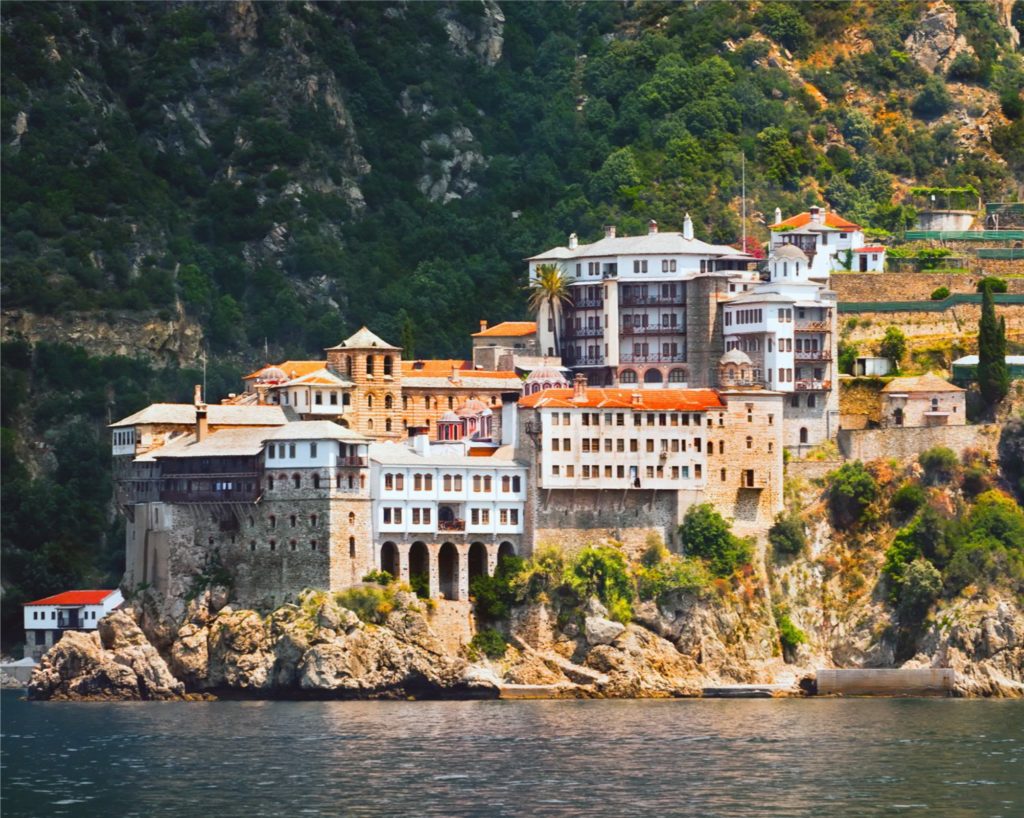

Mount Athos has been inhabited since ancient times and is known for its nearly 1,800-year continuous Christian presence and its long historical monastic traditions, which date back to at least 800 A.D. and the Byzantine era. Today, over 2,000 monks from Greece and many other countries, including Eastern Orthodox countries such as Romania, Moldova, Georgia, Bulgaria, Serbia and Russia, live an ascetic life in Athos, isolated from the rest of the world. The Athonite monasteries feature a rich collection of well-preserved artifacts, rare books, ancient documents, and artworks of immense historical value, and Mount Athos has been listed as a World Heritage site since 1988.
Although Mount Athos is forbidden to women and children, you can take a cruise around the peninsula of Athos by boat, from the ports of Ierissos (47 km away and about 50 min drive from Stavros) or Ouranoupolis (62 km away and about an hour drive from Stavros)
Ancient Theatre of Philipi
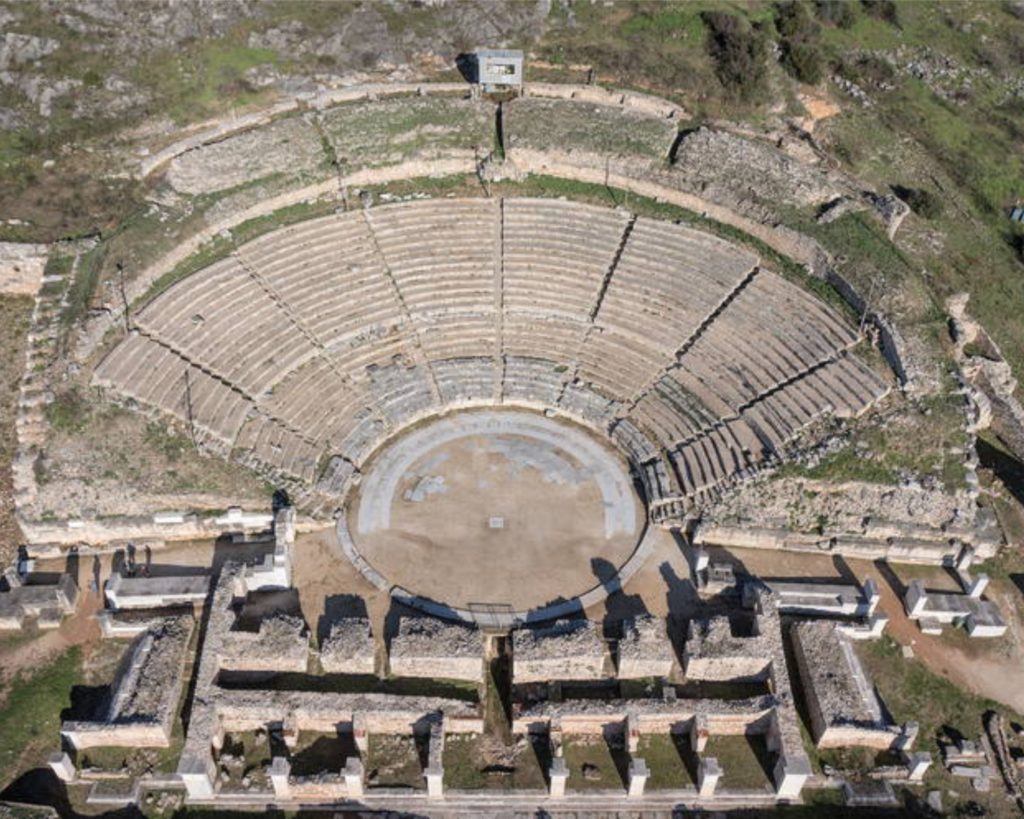

Opposite the ancient theatre of Philippi there are the ruins of the ancient city. The ancient city took its name in 356 b.c. after the father of Alexander the Great, Philippos the II.
The excavations have brought to light ruins from the Hellenistic, Roman, Byzantine and Paleochristian period. The octagon, the Roman forum, the paleochristian basilicas and parts of the city walls, are some of the most well known.
The Philippi Festival
One of the most important festivals in Greece. It takes place every summer on the site of the ancient theatre of Philippi and it hosts various plays and musical performances.
The ancient theatre lies approximately 90 km from Stavros and it’s about a 60 min drive.
